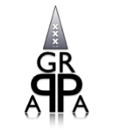About AARTFAAC
Some of the most extreme tests of physical law come from its manifestations in the behaviour of black holes and neutron stars, and as such these objects should be used as fundamental physics labs. Due to advances in both theoretical work and observational techniques, there is now a major opportunity to significantly push this agenda forward and get better answers to questions like: How are black holes born? How can energy be extracted from black holes? What is the origin of magnetic fields and cosmic rays in jets and shocks? Is their primary energy stream hadronic or magnetic?
The AARTFAAC (Amsterdam - ASTRON Radio Transients Facility and Analysis Centre) Project will take advantage of the advent of wide-field radio astronomy to exploit this opportunity. Extreme objects are very rare and usually transient, so not only must one survey large areas of sky, but also must one do this often. We will use the LOFAR wide-field radio telescope to hunt for these extreme transients and systematically collect enough well-documented examples of the behaviour of each type of transient. Furthermore, we will expand LOFAR with a true 24/7 all-sky monitor to catch and study even the rarest of events.
Next, we will conduct a vigorous multi-wavelength programme of study of these objects, to constrain their physics from as many angles as possible. This will eventually include results from multi-messenger astrophysics, in which we use neutrinos, gravity waves, and other non-electromagnetic messengers as extra diagnostics of the physics of these sources. We will then develop a theoretical framework for these phenomena and constrain the resulting models with the rich data sets we obtain.




